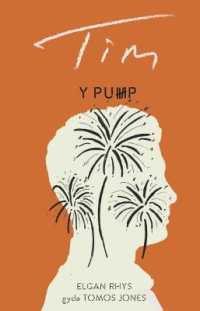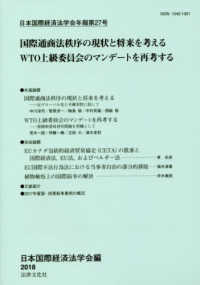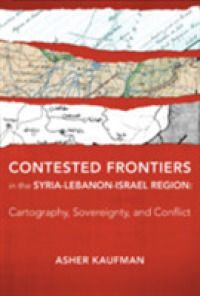- ホーム
- > 洋書
- > 英文書
- > Politics / International Relations
Full Description
The Cold War is over, but the danger from Russia has returned. This book explores the challenge Europe faces of building a 21st-century defense infrastructure and rebuilding NATO forces to confront Russia and other authoritarian states and movements.Neither the return of the Russian threat nor Russia's seizure of European territory was anticipated or prepared for. The two core Western institutions-the European Union (EU) and NATO-expanded eastward but without shaping a defense structure designed for the direct defense of the continent. Since 2014, there has been a shift in thinking, with more allocation of resources to defense. However, with the crises in the EU and the shift in U.S. global defense policy-first with Barack Obama's focus on the Pacific and then with Donald Trump's reset-how the West deals with the 21st-century Russian defense challenge is a work in progress.This book looks at the nature of these 21st-century challenges, which are as significant as the Cold War but require different responses and different means. The authors analyze how key European states and institutions are seeking to address the new situation by incorporating a wide range of interviews in every key NATO nation. The book concludes with a look forward at the decade ahead and at the flashpoints that could trigger European conflict.Provides an overview on the new strategic context within which European states have to readdress defense challengesOffers a series of case studies built around key nations involved in rethinking direct defense in EuropeFocuses on key building blocks of crafting a 21st-century approach to deterrence of Russia and to working with the United StatesConcludes with a discussion of how European divergences and U.S. interactions with those divergences are reshaping NATO and the direct defense of Europe








